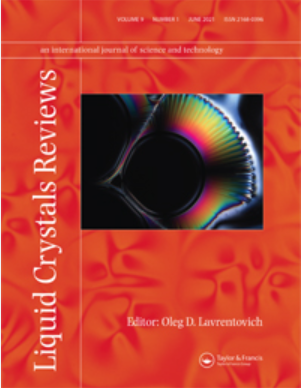The dynamics of colloidal intrusions in liquid crystals: a simulation perspective
IF 4.2
3区 材料科学
Q2 CHEMISTRY, PHYSICAL
引用次数: 40
Abstract
Dispersing colloidal particles into liquid crystals provides a promising avenue to build a novel class of materials, with potential applications, among others, as photonic crystals, biosensors, metamaterials and new generation liquid crystal devices. Understanding the physics and dynamical properties of such composite materials is then of high-technological relevance; it also provides a remarkable challenge from a fundamental science point of view due to the intricacies of the hydrodynamic equations governing their dynamical evolution. Here, we provide an overview of our current theoretical understanding of the dynamical and hydrodynamic properties of colloid–liquid crystal composites, focussing on the results obtained from computer simulations; no or very limited previous knowledge of the field of liquid crystals is assumed. While our main emphasis is on the dynamics, we also review a selection of equilibrium results and simulations to provide the necessary background. We start by describing what we know about the simplest possible problem: that of a single particle in a nematic, or cholesteric, liquid crystal. We then consider two particles, and review the conditions which lead to the formation of a dimer; we then again focus on dynamical problems. Finally, we turn to the more complicated case of a dispersion, reviewing here simulations motivated by optical tweezer and rheological experiments. We close by making a list of some of the many open problems in this rapidly developing research field.液晶中胶体侵入的动力学:模拟视角
将胶体颗粒分散到液晶中为构建一类新型材料提供了一条有希望的途径,在光子晶体、生物传感器、超材料和新一代液晶器件等方面具有潜在的应用前景。了解这种复合材料的物理和动力学特性是高科技的相关;它也提供了一个显著的挑战,从基础科学的角度来看,由于流体动力学方程的复杂性控制其动力演化。在这里,我们概述了目前对胶体-液晶复合材料的动力学和流体动力学特性的理论认识,重点介绍了计算机模拟得到的结果;假定对液晶领域没有或非常有限的先前知识。虽然我们的主要重点是动力学,但我们也回顾了平衡结果和模拟的选择,以提供必要的背景。我们从描述我们所知道的最简单的可能的问题开始:向列型或胆甾型液晶中的单个粒子。然后我们考虑两种粒子,并回顾导致二聚体形成的条件;然后我们再次关注动力学问题。最后,我们转向更复杂的色散情况,回顾这里由光镊和流变实验激发的模拟。最后,我们列出了这个快速发展的研究领域中许多尚未解决的问题。
本文章由计算机程序翻译,如有差异,请以英文原文为准。
求助全文
约1分钟内获得全文
求助全文
来源期刊

Liquid Crystals Reviews
CHEMISTRY, PHYSICALCRYSTALLOGRAPHY&n-CRYSTALLOGRAPHY
CiteScore
7.60
自引率
5.90%
发文量
8
期刊介绍:
Liquid Crystals Reviews publishes review articles on all aspects of liquid crystal fundamentals and applied science, including experimental and theoretical studies of physical and chemical properties, molecular design and synthesis and engineering of liquid crystal devices. The Journal fosters cross-disciplinary exchange of ideas, encouraging authors to present material at a level accessible to specialists from other fields of science and engineering. Liquid Crystals Reviews provides the scientific community, in both academia and industry, with a publication of standing, guaranteed by the Editors and by the International Editorial Board who are active scientists in the worldwide liquid crystal community.
 求助内容:
求助内容: 应助结果提醒方式:
应助结果提醒方式:


